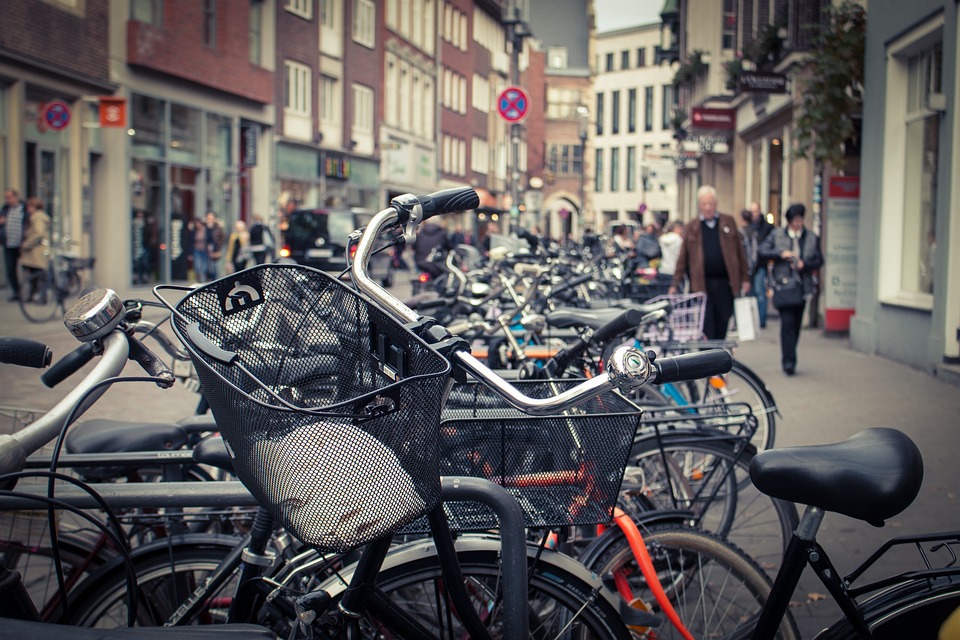Why Bicycle Paths Need to Change to Boost Cyclists Engagement
The recent protests in New York City are just one of the many protests that have been occurring over the last few years in regards to bike lanes. This is because as bike ridership increases, more individuals are demanding safer routes. They do not want to contend with aggressive drivers or fight for routes that are safe to cycle along. Cities haven't been quick to respond to the demands, but have recently been indicating at a favourable compromise in the future.
image © Flickr
The first step a city typically takes to demonstrate their allegiance with cyclists, is to create a lane on the road dedicated to them. This lane, however, is often not enough because of either the size or the unclear marking between the cycling and motorist lanes.
When it comes to the size of the bike lane, the final width is left to the discretion of each city. So while it is recommended that the minimum width of a bike lane should be 1.2m (4 feet), it ultimately depends on the city if they wish to build a wider lane that can accommodate activities like biking alongside each other or passing.
If a wider lane is chosen, this not only creates more opportunities for cyclists to ride, but also visually stunts the roadway to make it look (and be) narrower for motorists. This in turn reduces the speed of motorists which then increases the safety of the road for cyclists and motorists alike.
Whether or not a wider lane is chosen, the narrowing of the streets would be beneficial for cyclists and pedestrians alike as it is known to reduce the speed of cars, and significantly boost retail businesses as they have a better curb appeal.
While having a wider lane is preferred and beneficial, it may not be plausible in some areas. This then causes cyclists to ride closer to the curb. While it’s not ideal, it doesn’t have to stunt participation. If the city cannot support a wide bike lane, then they need to ensure that the side of the road is usable and continuously cleared. This means taking care of the snow in the winter and checking on the drainage grates. One of the biggest hazards when it comes to biking on the side of the road is drainage grates. While they are necessary in order to prevent urban flooding, certain storm drains can be hazardous for cyclists if the gap is large enough to get a wheel caught. That is why assessing the drains and ensuring that smaller, horizontally slotted grates are the only style used in these areas.
image © Flickr
Perhaps the most important element to making a cyclist feel safe (and be safer) is having a distinction between the automobile and bicycle lanes. The inability for motorists to distinguish a bicycle lane from an automobile lane is a common fear among cyclists and one of the top reasons why people do not feel safe on bikes. As a way to rectify this, some cities (still not nearly enough) have implemented bollards along the road to create a protective bike lane. The bollards create a visual and physical barrier between the cyclists and the motorist, and make the bike lane into essentially a sidewalk for bikes.
Protected bike lanes are most preferred, but again not achievable in all areas - especially when it comes to suburban routes. Although there is a perceived sense of safety on routes that are located on quieter streets, cyclists still face multiple dangers. This is because often cars are travelling at faster speeds - even if a reduced speed is posted. One way to adjust the speed of the motorist to make it safer for a cyclists is to implement a traffic calming neighbourhood. These can be achieved by installing speed bumps for cars, median barriers, roundabouts, and visually textured surfaces of the bike lane.
image © Wiki Commons
Now that we’ve considered safer methods for inner city and suburban cyclists, the next issue which is undoubtedly the most dangerous-intersections. According to Vehicular Cyclist, 64 percent of total bicycle accidents have occurred at intersections. This is why it’s important for cities to install good cycling infrastructure that will benefit cyclists and motorists. Suggested measures for safer intersections include bike friendly signals, buffer lines, and distinctive lanes. Each of these can help to increase the flow of traffic, the safety of cyclists, and improve the commute for both cyclists and motorists.
image © pxhere
The final factor that must be considered for making a successful bike lane is ensuring that there is plenty of bike parking along the way. Whether travelling for business or pleasure, when cyclists are relying on their bike as a form of transportation, they want to be able to dismount and leave their bike when they reach a destination or need a rest. So incorporating bike shelters, or bike racks along any pathways, as well as in front of stores and businesses, will ultimately influence the likelihood of an individual joining the ever increasing cycling community.
cover image © pxhere









